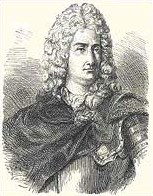In “Experimenters’ Techniques, Dyers’ Hands, and the Electric Planetarium” (1997), Simon Schaffer makes a set of ambitious arguments concerning how 18th-century natural philosophy regarded knowledge that is dependent upon, and sometimes tacit within, manual labor. His entryway into this problem is the frequently ineffable manual skill required in early electrical experimentation, and the intriguing coincidence that two of the most prominent early 18th-century electrical experimenters, Stephen Gray (1666-1736) and Charles Dufay (1698-1739), were, respectively, a former Canterbury cloth dyer and overseer of the Gobelins dye works in Paris.
 From Hellot, Macquer, and Le Pileur d’Apligny, The Art of Dying Wool, Silk, and Cotton, 1789 English edition
From Hellot, Macquer, and Le Pileur d’Apligny, The Art of Dying Wool, Silk, and Cotton, 1789 English edition
In his piece, Schaffer expands on points he made in his 1992 Critical Inquiry piece, “Self Evidence.” He also employs the concept of “gestural knowledge,” which Otto Sibum employed in a 1995 piece on James Joule’s (1818-1889) thermometry, as well as sociologist Marcel Mauss’s (1872-1950) concept of “body technique”.
However, Schaffer’s emphasis on gestures and the body here is mainly in the service of his more longstanding concern with experimental replication, and the associated problem of “tacit knowledge,” developed by Michael Polanyi (1891-1976), and integrated into the sociology of scientific knowledge by Harry Collins. In this case, the focus is on historical actors’ considerations of whether the “electric planetarium” experiment of Gray and Granville Wheler (1701-1770) was invalid, or its limited successes hinged on some unexpressed technique. As we saw in the last post, when Wheler allowed that he must have been inadvertently influencing the experiment, its philosophical import collapsed.
In many ways, the electric planetarium story is a classic instance of the difficulty of preventing bias from influencing experimental outcomes. Schaffer, however, attempts to use the case to develop a more elaborate historical analysis of what social circumstances allowed body-dependent evidence to carry credibility in philosophical discourses.
I don’t think he really succeeds.
Ultimately, the connections Schaffer draws between “body technique” and natural philosophy are quite weak. He asserts that in the early eighteenth century, “It was questionable whether craftsmen’s hands could be the bearers of reliable philosophy” (459). Electrical “work could not become natural philosophy simply by transferring dyers’ skills to the rooms of the Royal Society” (460). Yet, “Electrical phenomena depended on manual skills embodied in individual persons who might look like proficient performers but might also seem lowly vendors of curiosities” (463).
These concerns lead Schaffer quickly away from questions of technique, and into his preferred realm of social relations. First, he points out, “By the late 1720s Gray could call upon a resource that changed his standing among the virtuosi—the support of Granvill Wheler, a wealthy young gentleman with a large Kentish estate” (466). Then, Gray’s work had to engage with philosophical questions: the possible physiological and theological roles of electricity, and—in the case of the electric planetarium—its possible consequences for astronomical knowledge.
Only then could entertaining electrical shows be safely regarded as philosophical events as well: “In the repository at Crane Court, Gray arranged ‘six or seven persons’ on a series of cakes of resin, made them join hands, electrified one end of the human chain, and showed how leaf gold jumped near the other.” Through such means, “The humble dyer became a skilled impresario” (469-70).
Once fully integrated into philosophical society, experiments dependent upon Gray’s use of his body could command philosophical attention, even posthumously. In fact, it is possible that philosophers gave unusual countenance to Gray’s electric planetarium out of a respect they felt was due to the dead.
 Sibum
Sibum
But, in Schaffer’s telling, the role of the body, specifically, seems incidental to a story about the generic difficulties of experimentation, and what benefit of the doubt could accrue to individuals who managed to find their way into philosophical circles. By claiming here to “draw on” Otto Sibum’s concept of “gestural knowledge” (459) to analyze the electric planetarium episode, I think Schaffer does a disservice to the depth of Sibum’s work. Where Schaffer draws only vague connections between dying and electrical experimentation, Sibum was able to establish very clear connections between Joule’s experience as a brewer, and his skill in measuring temperature in difficult experimental settings. (Beyond that, of course, Sibum actually attempted to replicate the experiments himself, helping to make clear just what role that skill played.)
Ultimately, I think Schaffer’s story is important for Schaffer not because it tells us much about the history of experimental technique, but because it forms a piece of a larger story he wants to tell about the development of a philosophical ideology. Schaffer needs to make his story one that is about the body, because his larger story revolves around that ideology’s imperious agenda toward manual labor. Thus, according to Schaffer (458-59):
In early modern culture the comparative secrecy of the artisan workshops encouraged the sense that embodied competences could never quite be granted the status of philosophy. Indication of the body’s unwonted presence in the realms of mind and spirit might be seen as denigration, while philosophical scrutiny of artisans in history of trades could be understood as enlightenment. The Encyclopédie, initially inspired by Ephraim Chambers’s [c.1680-1740] 1728 survey of arts and trades, proclaimed the liberation of the mechanical arts from the ignorant condescension of the noble, yet it did so in the name of rationalized labor processes under enlightened managers.
Indeed, “Historians of trades reckoned that valuable knowledge was locked up in the localized operations of mechanical workers, whom they saw as so many automata. In such eighteenth-century histories, managing hands and extracting the knowledge they possessed were peculiarly important” (459).
Schaffer views it as especially significant that, “In England the very term hand to describe a worker was a later seventeenth-century coinage, common in the shops and yards of Augustan London, then used for subordinate laborers in complex systems of discipline” (459-60). Citing Steven Shapin’s Social History of Truth (1994) and Stephen Pumfrey’s “Who Did the Work? Experimental Philosophers and Public Demonstrators in Augustan England” (1995), Schaffer notes that both the body’s hands and workshop hands were potential sites of experimental failure, thus necessitating rigorous oversight and control. He later points out that Michel Foucault cited the training system used at the Gobelins “as the exemplary form of classical discipline” in Discipline and Punish (482n61).
 Dufay, looking imperious
Dufay, looking imperious
The terms of this philosophical ideology established, it becomes possible to read them back upon historical events, including the history of the electric planetarium experiment. Thus in May 1736, when Dufay—recall, the manager of the Gobelins dye works—performed experiments such as suspending a “wire needle balance on an iron bar” in order “to map … electric vortices and measure their force,” it constituted an effort “to substitute for, then efface, the public ways of Gray’s hand” (480).
Schaffer draws an explicit contrast between Dufay’s ideology and that of Wheler. In Wheler’s “world, to be gentlemanly and civil was to be in charge of one’s own person. It was well understood that hands might be a source of disorder…. In comparison, Dufay made an objectifying gesture away from his own person to a reliable instrument, thus seemingly factoring out human agency in the production of a matter of fact” (481-82).
I don’t really buy Schaffer’s contrast here. But for Schaffer it is seemingly fundamental. In his view Dufay’s experimental apparatus and attitude—unlike Gray’s and Wheler’s—were clearly identifiable as an early step in the ascendancy of a paradigmatic “machine philosophy”.
And, crucially, the power of machine philosophy, in turn, had lasting historiographical ramifications that, in 1997, still needed to be upended. According to Schaffer, “An influential tradition distinguishes knowledges that seem cerebral, rational, and communicable from those apparently embodied, tacit, and irremediably local” (458).
Historians influenced by that tradition—I. Bernard Cohen and R. W. Home are specifically cited—had previously described Gray’s work as “desultory play” and the man himself as “a simple empiricist”. Their condescending language betrayed their failure to understand “the particular social place of such playful experimentation” (464).
Schaffer implies that the influence of this tradition might have been responsible for why the electric planetarium was “all but absent from the official history of electricity”. It “might,” he implies, have been whiggishly “taken as an unfortunate detour on the road from Stephen Gray’s demonstration of electrical conduction in 1729 to Charles Dufay’s enunciation of the principles of electrification by influence before 1738” (457).
Thus, the historiographical and historical narratives that Schaffer constructs, and his invocation of the classic sociological insight of Mauss, and the fresh one of Sibum, all permit him to present his recovery and reconstruction of the electric planetarium experiment as much more than a simple bit of empirical history—it is a historiographically heroic deed. His paper is nothing less than “a compelling challenge” (458) to a deservedly doomed historiographical tradition, which naively took historical actors’ narratives of rational enlightenment at face value. In doing so, that tradition had allowed systematic errors of omission and presentation to corrupt our understanding of the history of ideas, and of the regime of intellectually justified management and governance that those ideas have historically supported.
In a brief follow-on post, I will discuss the characteristics of early 18th-century natural philosophy that allowed a rudimentary electrical experiment to be taken as producing evidence relevant to astronomical knowledge.
After that, we turn to Schaffer’s “Enlightened Automata,” where he most clearly and completely articulates his views on “machine philosophy” and its connections to Enlightenment ideology.